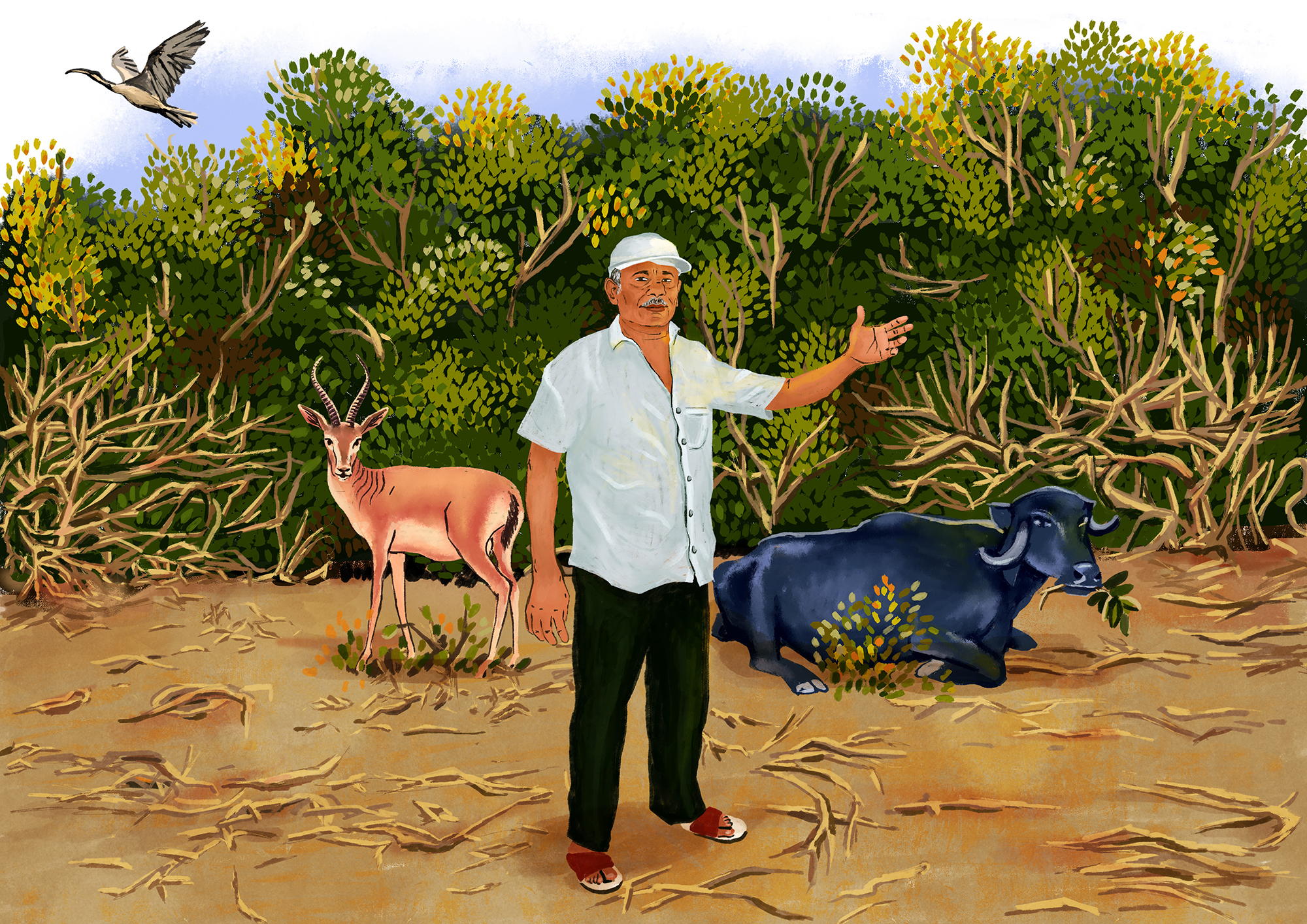- Kutch in Gujarat is one of the few places in the world to have inland mangroves. These unique mangroves are located in Shravan Kavadia and Guneri.
- While Shravan Kavadia mangroves have been degrading over the years, Guneri’s mangroves are flourishing.
- Deva bhai, from Guneri, has been leading community efforts to prohibit cutting of the mangrove trees and prevent wildlife poaching.
- The local community deeply reveres the mangroves and says that the ecosystem has sustained them in the worst of droughts.
In Guneri, Kutch, there is a belief that many years ago, when the Indian subcontinent was not as fragmented, a Sufi saint had come to the region and planted two sticks in the ground. Here, in the space between, flourished inland mangroves that are absolutely disconnected from the sea, making it one of the very few places in the world to sustain such a unique ecological feature.
For the locals of the village, however, these mangroves are more than ecologically significant. “We deeply revere these mangroves; they have sustained us through many droughts,” Jadeja Devaji Negrajji, or as he is more popularly known — Deva bhai — said. Cutting of these trees, therefore, is prohibited and Deva bhai leads Guneri’s efforts in protecting these mangroves.

The beginning
Mangroves, by definition, are small shrubs or trees that grow in saline or brackish water, and are found in coastal areas. The mangroves of Guneri and also of Shravan Kavadia, both in Kutch, however, are completely landlocked and are therefore unique. “They (Kutch’s inland mangroves) are in fact among the very few, maybe three-four, of their kind recorded in the world,” G. A. Thivakaran, chief principal scientist of the marine and coastal ecology division of the Gujarat Institute of Desert Ecology (GUIDE) said. The others are in Brazil, Peru and South America.
The scientific history of these mangroves and how they came into being is as interesting as the story of Kutch itself. Experts say that about two millennia back, the Rann of Kutch was a shallow sea. Over the years, as the water started receding, the dried land lifted up due to tectonic shift. The Arabian sea receded by 100-150 kms from the coastline, resulting in the inland mangroves of Guneri and Shravan Kavadia which survived because of continued supply of brackish or saline water underground. Experts therefore believe that these mangroves belong to ancient biogenetic pools. The good underground supply of brackish water helps in dispersal of seeds and propagation.
Among the two, the Shravan Kadavia grove has been degrading rapidly. “The Shravan Kavadia grove was 30-35 hectares in size; until three years back, only about 13 hectares have remained,” Thivakaran told Mongabay-India, “It has stopped regenerating; propagation has stopped.”
A major chunk of the Shravan Kavadia groves was destroyed in the 1998 cyclone, and the rest by an attack of the wood borer pest. Thivakaran added that it could also be that the underground supply of brackish water may have been cut off. “The exact reason is not known—it could have been because of human intervention, climatic changes. A detailed study is required,” he said. Guneri, however, is a different story.



 Deva bhai, from Guneri, has been leading community efforts to prohibit the cutting of the mangrove trees and prevent wildlife poaching. Illustration by Neethi for Mongabay.
Deva bhai, from Guneri, has been leading community efforts to prohibit the cutting of the mangrove trees and prevent wildlife poaching. Illustration by Neethi for Mongabay.